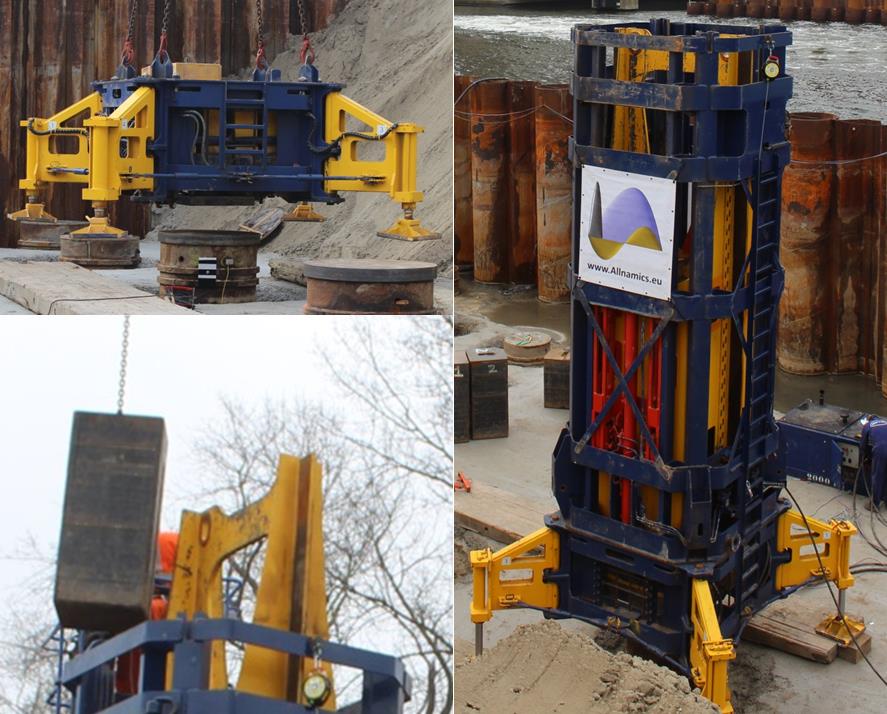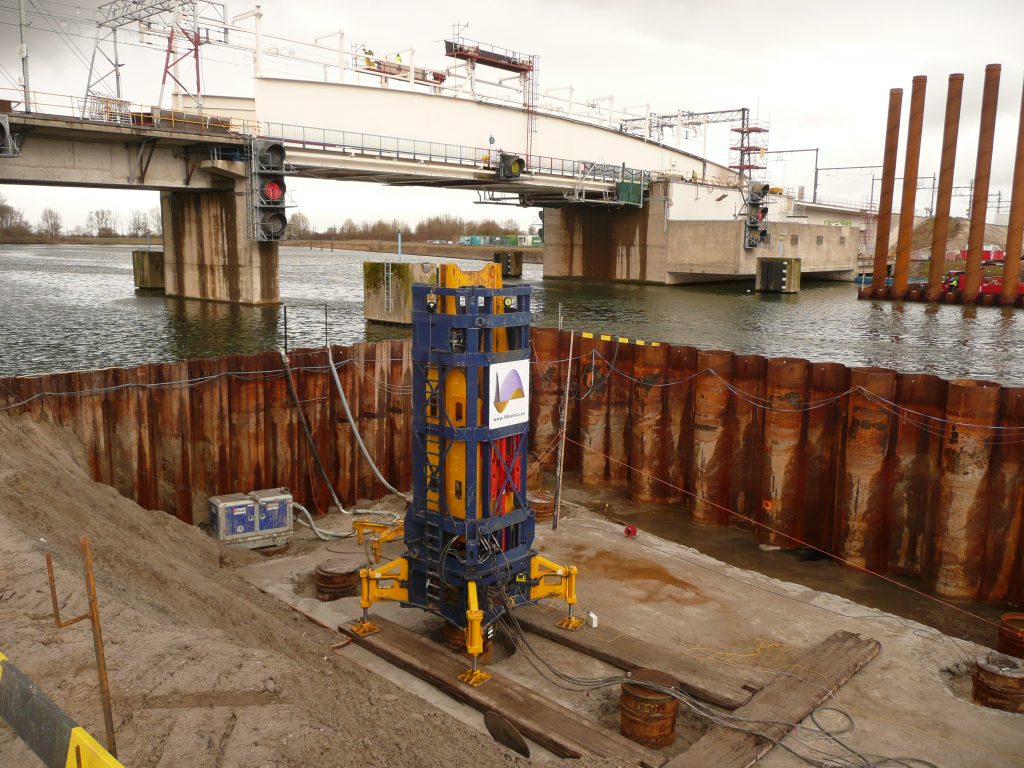Using the 8 MN StatRapid Allnamics performed Rapid Load Testing on steel pipe piles for the foundation of the movable bridge over the Boudewijn Canal near Brugge in Belgium in March 2015.
The tests were performed on four 1016 mm (40 inch) diameter steel pipe piles with a length of 21.8 m (71.5 ft). Despite the challenging location and site conditions the tests on these 4 piles could be performed in only 2 days.
With a drop weight of 40 tons the 8 MN StatRapid can generate the equivalent of an 800 ton static load. As the drop weight lands on a set of special springs the loading characteristic is such that the pile behaves quasi-statically. Consequently the analysis of the test results is relatively simple and the outcome is independent of the results, which is not the case for dynamic load testing.

Modular build up StatRapid
As it is modular the StatRapid can be adapted prior to mobilization to suit different pile types and pile lengths. With the AllWave-RLT simulation software the required configuration can be determined in advance.
Instrumentation and monitoring
During the test the applied force and the displacement of the pile top are measured. With these measurements the stiffness, load-displacement behavior and the maximum mobilized static bearing capacity of the pile can be determined using the Unloading Point Method (UPM).
The force is measured with calibrated load cells (A), the pile displacement with an optical measurement system (B and D), and the acceleration with a highly sensitive accelerometer (C). The load cells are placed on a steel plate (F) to distribute the force evenly over the pile cross section. In this particular case a pile drive cap (G) was used as well given the large diameter of the pipe pile.

Monitoring setup and data acquisition system (PDR)
The self calibrating Reyca system measures the pile head displacement accurately through the movements of the black and white bands on the reflector plate (D). Since the band width is known these measurements can even be taken under an angle.
The main function of the accelerometer is to register the acceleration of the pile head as a function of time. From these measurements the inertia of the system can be determined. In addition the accelerometer is used to trigger the data acquisition system and through a double integration the measurements provide a redundant determination of the pile head movement.
The load cells and the accelerometers are connected to the Allnamics’ PDR (E), the data acquisition system. The measurements are recorded in the PDR’s internal memory and also transferred by WiFi to a field computer running the Allnamics’ RLT monitoring software. With this software it is possible to present the raw data instantaneously in graphical form (as a load displacement diagram). The PDR and the associated monitoring and analysis software make it possible to report the Rapid Load Test results in accordance with ASTM D7383-10 as well as CUR Guideline 230. The latter clearly defines how the measurements are to be converted into the pile’s static load displacement behaviour.
Several tests around the world have shown that the Rapid Load Test results (using the StatRapid or Statnamic equipment) correlate very well with the Static Load Test results. Mobilization and erection of the equipment, testing of 4 piles (each with several load cycles), and the subsequent dismantling and demobilization of the equipment took only 2 work days for this project.
If you need additional information on Rapid Load Testing or the StatRapid (which was developed by Allnamics in cooperation with Cape Holland), please feel free to contact us.

Photo 1 StatRapid test location 1

Photo 2 StatRapid test location 2



